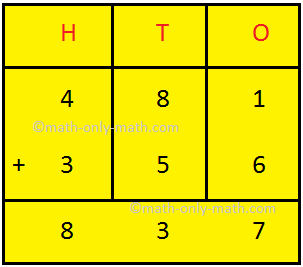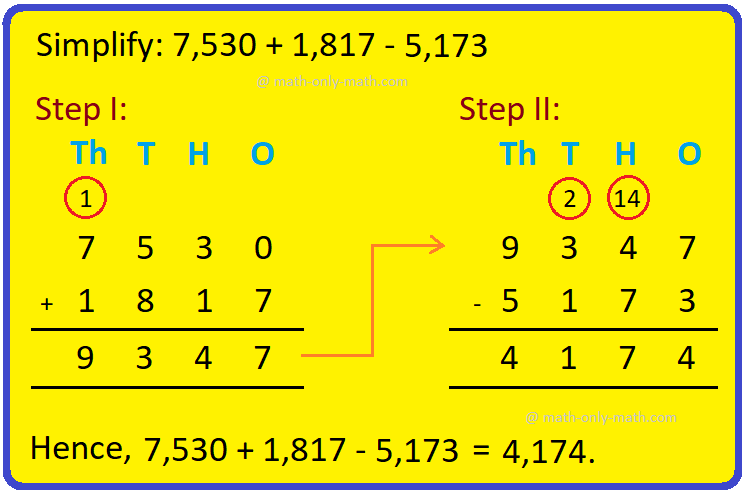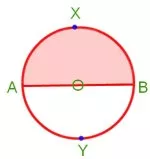Subscribe to our YouTube channel for the latest videos, updates, and tips.
Home | About Us | Contact Us | Privacy | Math Blog
Solvability of Linear Simultaneous Equations
To understand the condition for solvability of linear simultaneous equations in two variables, if linear simultaneous equations in two variables have no solution, they are called inconsistent whereas if they have solution, they are called consistent.
In the method of cross-multiplication, for the simultaneous equations,
a₁x + b₁y + c₁ = 0 --------- (i)
a₂x + b₂y + c₂ = 0 --------- (ii)
we get: x/(b₁ c₂ - b₂ c₁) = y/(a₂ c₁ - a₁ c₂) = 1/(a₁ b₂ - a₂ b₁)
that is, x = (b₁ c₂ - b₂ c₁)/(a₁ b₂ - a₂ b₁) , y = (a₂ c₁ - a₁ c₂)/(a₁ b₂ - a₂ b₁) --------- (iii)
Now, let us see when the solvability of linear simultaneous equations in two variables (i), (ii) are solvable.
(1) If (a₁ b₂ - a₂ b₁) ≠ 0 for any values of (b₁ c₂ - b₂ c₁) and (a₂ c₁ - a₁ c₂), we get unique solutions for x and y from equation (iii)
For examples:
7x + y + 3 = 0 ------------ (i)
2x + 5y – 11 = 0 ------------ (ii)
Here, a₁ = 7, a₂ = 2, b₁ = 1, b₂ = 5, c₁ = 3, c₂ = -11
and (a₁ b₂ - a₂ b₁) = 33 ≠ 0 from equation (iii)
we get, x = -26/33 , y = 83/33
Therefore, (a₁ b₂ - a₂ b₁) ≠ 0, then the simultaneous equations (i), (ii) are always consistent.
(2) If (a₁ b₂ - a₂ b₁) = 0 and one of (b₁ c₂ - b₂ c₁) and (a₂ c₁ - a₁ c₂) is zero (in that case, the other one is also zero), we get,
a₁/a₂ = b₁/b₂ = c₁/c₂ = k (Let) where k ≠ 0
that is, a₁ = ka₂, b₁ = kb₂ and c₁ = kc₂ and changed forms of the simultaneous equations are
ka₂x + kb₂y + kc₂ = 0
a₂x + b₂y + c₂ = 0
But they are two different forms of the same equation; expressing x in terms of y, we get
x = - b₂y + c₂/a₂
Which indicates that for each definite value of y, there is a definite value of x, in other words, there are infinite number of solutions of the simultaneous equations in this case?
For examples:
7x + y + 3 = 0
14x + 2y + 6 = 0
Here, a₁/a₂ = b₁/b₂ = c₁/c₂ = 1/2
Actually, we get the second equation when the first equation is multiplied by 2. In fact, there is only one equation and expressing x in term of y, we get:
x = -(y + 3)/7
Some of the solutions in particular:
(3) If (a₁ b₂ - a₂ b₁) = 0 and one of (b₁ c₂ - b₂ c₁) and (a₂ c₁ - a₁ c₂) is non-zero (then the other one is also non-zero) we get,
(let) k = a₁/a₂ = b₁/b₂ ≠ c₁/c₂
That is, a₁ = ka₂ and b₁ = kb₂
In this case, the changed forms of simultaneous equations (i) and (ii) are
ka₂x + kb₂y + c₁ = 0 ………. (v)
a₂x + b₂y + c₂ = 0 ………. (vi)
and equation (iii) do not give any value of x and y. So the equations are inconsistent.
At the time of drawing graphs, we will notice that a linear equation in two variables always represents a straight line and the two equations of the forms (v) and (vi) represent two parallel straight lines. For that reason, they do not have any common point.
For examples:
7x + y + 3 = 0
14x + 2y - 1 = 0
Here, a₁ = 7, b₁ = 1, c₁ = 3 and a₂ = 14, b₂ = 2, c₂ = -1
and a₁/a₂ = b₁/b₂ ≠ c₁/c₂
So, the given simultaneous equations are inconsistent.
From the above discussion, we can arrive at the following conclusions that the solvability of linear simultaneous equations in two variables
a₁x + b₁y + c₁ = 0 and a₂x + b₂y + c₂ = 0 will be
(1) Consistent if a₁/a₂ ≠ b₁/b₂: in this case, we will get unique solution
(2) Inconsistent, that is, there will be no solution if
a₁/a₂ = b₁/b₂ ≠ c₁/c₂ where c₁ ≠ 0, c₂ ≠ 0
(3) Consistent having infinite solution if
a₁/a₂ = b₁/b₂ = c₁/c₂ where c₁ ≠ 0, c₂ ≠ 0
● Simultaneous Linear Equations
Solvability of Linear Simultaneous Equations
Word Problems on Simultaneous Linear Equations
Word Problems on Simultaneous Linear Equations
Practice Test on Word Problems Involving Simultaneous Linear Equations
● Simultaneous Linear Equations - Worksheets
Worksheet on Simultaneous Linear Equations
Worksheet on Problems on Simultaneous Linear Equations
8th Grade Math Practice
From Solvability of Linear Simultaneous Equations to HOME PAGE
Didn't find what you were looking for? Or want to know more information about Math Only Math. Use this Google Search to find what you need.
Recent Articles
-
5th Grade Circle Worksheet | Free Worksheet with Answer |Practice Math
Jul 11, 25 02:14 PM
In 5th Grade Circle Worksheet you will get different types of questions on parts of a circle, relation between radius and diameter, interior of a circle, exterior of a circle and construction of circl… -
Construction of a Circle | Working Rules | Step-by-step Explanation |
Jul 09, 25 01:29 AM
Construction of a Circle when the length of its Radius is given. Working Rules | Step I: Open the compass such that its pointer be put on initial point (i.e. O) of ruler / scale and the pencil-end be… -
Combination of Addition and Subtraction | Mixed Addition & Subtraction
Jul 08, 25 02:32 PM
We will discuss here about the combination of addition and subtraction. The rules which can be used to solve the sums involving addition (+) and subtraction (-) together are: I: First add -
Addition & Subtraction Together |Combination of addition & subtraction
Jul 08, 25 02:23 PM
We will solve the different types of problems involving addition and subtraction together. To show the problem involving both addition and subtraction, we first group all the numbers with ‘+’ and… -
5th Grade Circle | Radius, Interior and Exterior of a Circle|Worksheet
Jul 08, 25 09:55 AM
A circle is the set of all those point in a plane whose distance from a fixed point remains constant. The fixed point is called the centre of the circle and the constant distance is known







New! Comments
Have your say about what you just read! Leave me a comment in the box below. Ask a Question or Answer a Question.